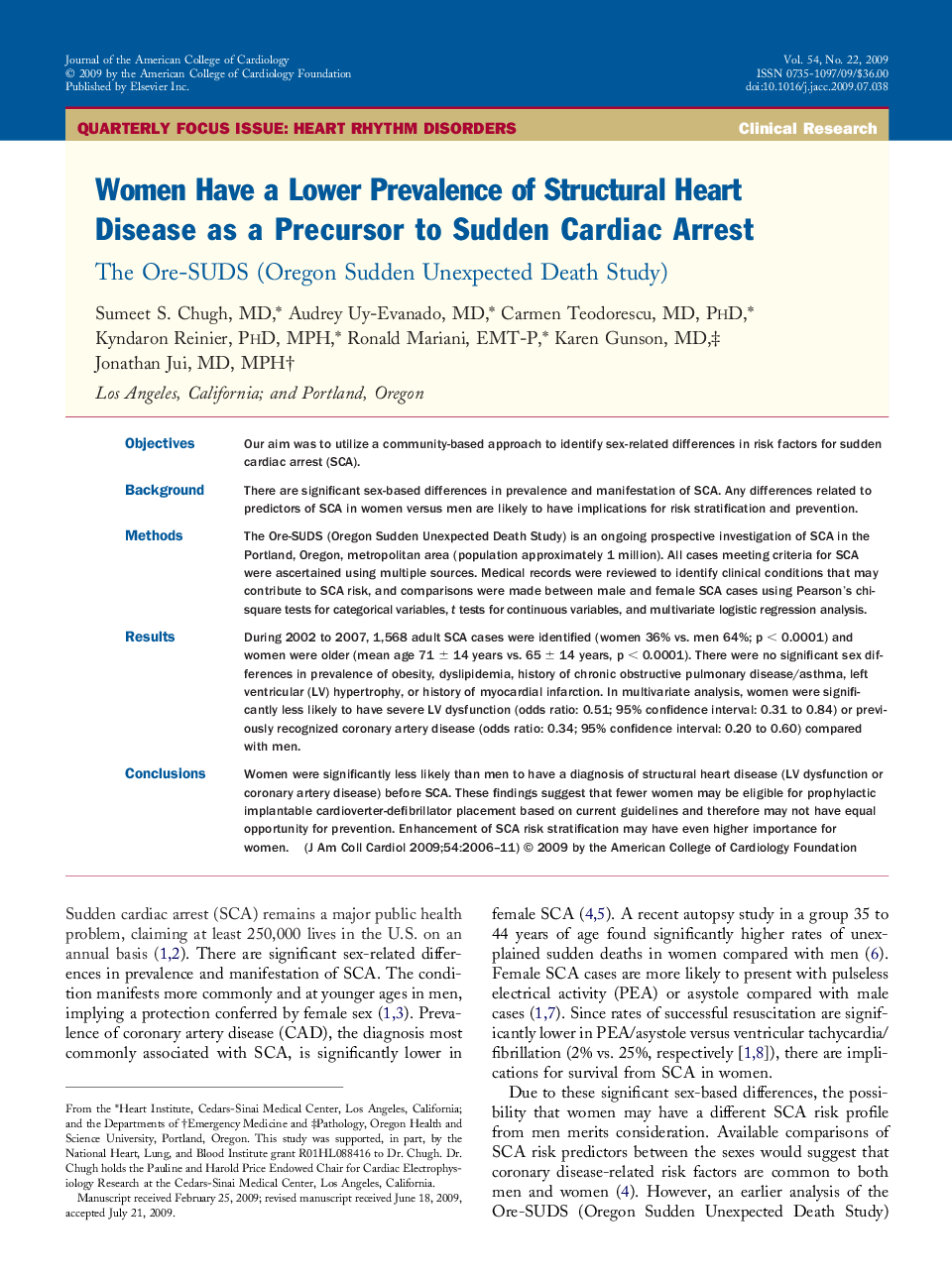| Article ID | Journal | Published Year | Pages | File Type |
|---|---|---|---|---|
| 2950521 | Journal of the American College of Cardiology | 2011 | 6 Pages |
ObjectivesOur aim was to utilize a community-based approach to identify sex-related differences in risk factors for sudden cardiac arrest (SCA).BackgroundThere are significant sex-based differences in prevalence and manifestation of SCA. Any differences related to predictors of SCA in women versus men are likely to have implications for risk stratification and prevention.MethodsThe Ore-SUDS (Oregon Sudden Unexpected Death Study) is an ongoing prospective investigation of SCA in the Portland, Oregon, metropolitan area (population approximately 1 million). All cases meeting criteria for SCA were ascertained using multiple sources. Medical records were reviewed to identify clinical conditions that may contribute to SCA risk, and comparisons were made between male and female SCA cases using Pearson's chi-square tests for categorical variables, ttests for continuous variables, and multivariate logistic regression analysis.ResultsDuring 2002 to 2007, 1,568 adult SCA cases were identified (women 36% vs. men 64%; p < 0.0001) and women were older (mean age 71 ± 14 years vs. 65 ± 14 years, p < 0.0001). There were no significant sex differences in prevalence of obesity, dyslipidemia, history of chronic obstructive pulmonary disease/asthma, left ventricular (LV) hypertrophy, or history of myocardial infarction. In multivariate analysis, women were significantly less likely to have severe LV dysfunction (odds ratio: 0.51; 95% confidence interval: 0.31 to 0.84) or previously recognized coronary artery disease (odds ratio: 0.34; 95% confidence interval: 0.20 to 0.60) compared with men.ConclusionsWomen were significantly less likely than men to have a diagnosis of structural heart disease (LV dysfunction or coronary artery disease) before SCA. These findings suggest that fewer women may be eligible for prophylactic implantable cardioverter-defibrillator placement based on current guidelines and therefore may not have equal opportunity for prevention. Enhancement of SCA risk stratification may have even higher importance for women.
